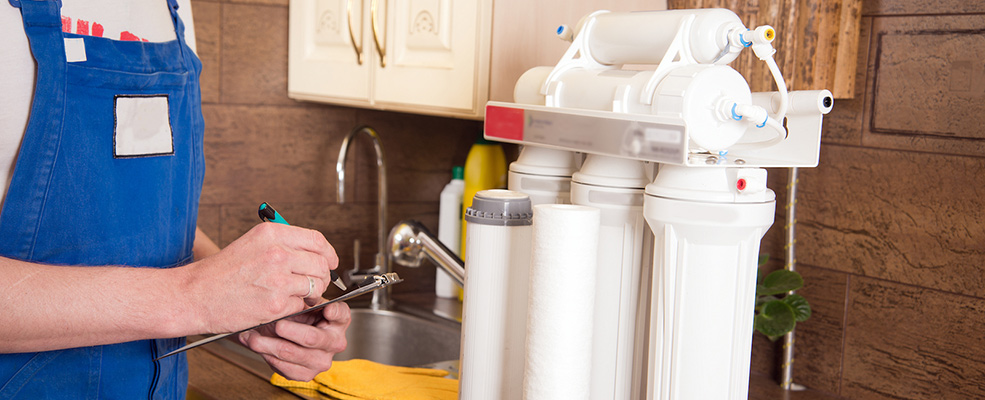Reverse osmosis water treatment systems are the most advanced, sophisticated and efficient filters for domestic water treatment. Originally, water treatment systems based on this principle were designed to treat water in the closed water supply system of submarines and spacecraft. In industry, such systems are used for seawater desalination as well as for water treatment in the food industry (including the production of alcoholic products, juices and bottled water), chemical industry, etc. If you think about water filtration system installation, it is worth paying attention to reverse osmosis system.

The key element of the reverse osmotic system is a semi-permeable membrane. In fact, the membrane is filtered at the atomic level, passing through only water molecules and atmospheric gas molecules (oxygen, nitrogen). This barrier removes dissolved inorganic and organic compounds, as well as heavy metals, hardness salts, all bacteria and viruses. At the same time, the water that has passed through the reverse osmosis system has excellent flavour qualities, as it retains dissolved gases.
Of course, with these characteristics, water treatment systems based on reverse osmosis are superior to all other types of water filters. Reverse osmosis filters are the only technology currently available for the final scale solution in a city apartment. Only Reverse Osmosis filters remove hardness salts from the water completely. There is a speculative view (mainly shared and supported by producers of bottled water) that osmotic water can be harmful to health (because it is “too clean”). There are various arguments to refute this view.

- Almost all bottled water on the market (except mineral water) is osmotic, obtained from industrial reverse osmosis systems. Nobody usually has any claims to such water, it has all certificates and so on.
- In some regions of the world people have been drinking distilled water (rainwater, where it is the only available kind of water) for thousands of years, with very low content of dissolved minerals without any health consequences.
- A significant proportion of salts and minerals are consumed by humans with solid food rather than water. To get the same amount of minerals as in 100 grams of fresh meat, a person would need to drink at least 100 litres of water. The daily dose of minerals that a person receives from food is equivalent to their content in several tons of drinking water. Not to mention the fact that minerals obtained with organic food are exactly what the body needs, not those ions of mainly heavy and radioactive metals contained in modern water sources. The use of osmotic water for cooking is not a problem: during cooking, liquid food is saturated with minerals from solid food, and the tiny amount of minerals that could be present additionally from water does not play a role. Just the opposite: The main purpose of osmotic water treatment is to remove those small concentrations of extremely hazardous substances that are not normally present in solid food, such as radioactive metal ions, lead, etc.
- Minerals in water are present there in a form that cannot be absorbed by the body anyway (e.g. hardness salts, iron, etc.). Instead of benefiting from their ingestion, they place additional stress on organs such as the liver and kidneys, contributing to the development of e.g. urolithiasis.
- Due to the so-called homeostasis (fundamental property of any living cell to keep its internal environment stable in isolation from the external environment), the consumption of low-mineralized water cannot lead to the loss of calcium and other ions by cells (“salt washing”). Otherwise, normal rain would kill all living flora around.

